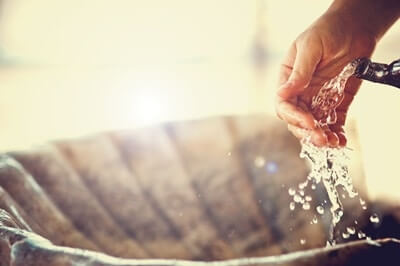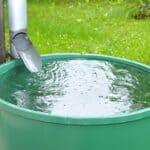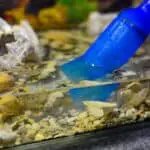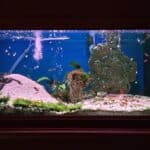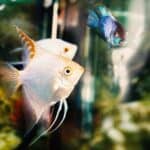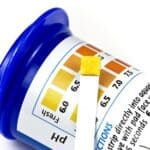Tap water seems like the obvious thing to fill tanks with. Unfortunately, it contains harmful chemicals, such as chlorine and chloramine, that can make fish sick. That’s why you need to treat tap water to make it safe.
To make tap water fish-safe, you must remove chlorine, chloramine, and heavy metals. These are toxic to fish, especially in large quantities. To do so, leave the tap water to sit for at least 24 hours. This allows the chlorine to evaporate. Though, it won’t deal with chloramine. Other methods include adding an air pump or stone, boiling the water, or installing a water filtration system to your tap. High-tech methods of safe-proofing tap water from all chemicals include adding a UV lamp to your tank and using a reverse osmosis unit.
While many owners use chemicals and conditioners in their tank to make tap water safe, it’s not always practical. Similarly, some owners don’t like using them. That’s why we have some effective methods to make tap water safe without the need for them.
Can You Put Tap Water in A Fish Tank?
Ordinary tap water is fine to use in a fish tank, but it must be properly treated first. This is to remove all the chemicals that are bad for aquatic creatures. Otherwise, your fish are at risk of developing a range of health issues. In the most serious cases, they can die. Tap water contains chemicals that can cause problems, including:
Chlorine
Chlorine is extremely harmful to fish. Chlorine toxicity causes acute necrosis, which is a dangerous condition that results in cell death. That’s because chlorine reacts with organic matter and living tissue in the tank, causing respiratory problems and, in the worse cases, asphyxiation.
As described by Reviews in Fisheries Science, fish aren’t only affected by chlorine but by the stress associated with the changing conditions.
How quickly they die depends on the amount of chlorine in the water. Smaller fish are more likely to be more severely affected than larger fish, but all can succumb to the toxicity within hours depending on the tank’s chlorine concentration levels. Signs that your fish are dying from a chlorine-related condition include:
- Pale, mucus-covered scales
- Redness on various parts of their body
- Gasping for air at the water’s surface
- Erratic swimming
- Loss of appetite
- Stress
Acute necrosis is usually caused by inexperienced owners adding tap water directly into their tank without treating it first.
Chlorine is mostly harmless to humans, but deadly for fish. That’s why novice owners fail to see the dangers of chlorine. The amount of chlorine in the water fluctuates between 0.5 and 2.0 parts per million (ppm).
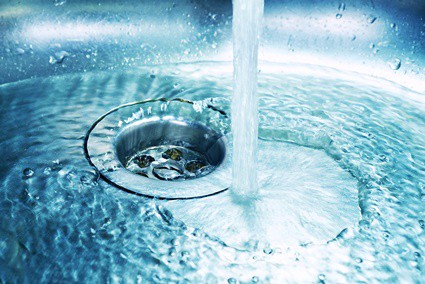
Chloramine
Chloramine is a chemical used to treat and disinfect water to prevent humans from getting sick. It’s considered more harmful than chlorine, as it’s a mixture of chlorine and ammonia. Also, unlike chlorine, it remains in tap water for extended periods of time and resists breaking down.
Chloramine is toxic to fish because it passes through their gills, where it’s absorbed into the bloodstream. As a result, fish struggle to absorb oxygen properly and gasp at the surface. They may also show similar signs to chlorine poisoning, with redness around their gills, erratic swimming, and stress.
The safe level of chloramine is between 0.002 ppm and 0.005 ppm. Anything higher is deadly for fish. If you suspect you have chloramine in your tank, you can purchase a testing kit from most aquatic stores to check the exact concentrations. However, you’ll need to act quickly to prevent your fish from dying.
Incorrect pH Levels
All tanks have specific pH requirements. A pH of 7.0 is considered neutral when it comes to aquariums. While the correct pH level largely depends on the fish you have, most tropical tanks do well with a pH of 6.8 to 7.6. These fish need the following pH levels:
- Angelfish: 6.0 to 7.0
- Clown loach: 6.0 to 6.5
- Goldfish: 7.0 to 7.5
- Harlequin rasbora: 6.0 to 6.5
- Hatchetfish: 6.0 to 7.0
- Neon tetra: 5.8 to 6.2
- Plecostomus: 5.0 to 7.0
- Silver dollar: 6.0 to 7.0
- Tiger barb: 6.0 to 6.5
- Zebra danio: 6.5 to 7.0
When you add tap water that has a different pH to your aquarium, fish can become sick. Some fish, including discus and other cichlids, don’t have much tolerance outside their ideal pH range and won’t last long in unsuitable water.
Also, sudden changes to the water’s pH cause toxic chemicals such as ammonia to rise. This is one of the deadliest chemicals tanks face as it poisons fish quickly. As a result, they’ll develop the following symptoms:
- Lethargy
- Loss of appetite
- Red or cloudy eyes
- Gasping at the water’s surface
- Redness around gills
- Death
To prevent this, you must be careful about how much tap water you add into your tank at one time, checking the pH carefully. If it’s not right, you’ll need to take measures to adjust the water’s pH to suit your fish.
Heavy Metals
Heavy metals are sometimes present in tap water. As discovered by researchers at the Department of Environmental Sciences, heavy metals tend to be more toxic in hard water. Tap water contains the following metals:
Iron
Iron is lethal in even the smallest quantities, and anything between 0.1 to 10 ppm is considered toxic. It also reacts differently depending on the water’s pH. If pH levels are 7.0 or above, iron hydroxides appear on fish gills, causing:
- Suffocation
- Gill tissue swelling
- Mucous secretion
Chronic copper exposure causes gill, kidney, and spleen damage. It’ll also affect the immune system, leaving it vulnerable to health conditions.
Iron also energizes algae growth, which can cause a range of problems. This includes increased ammonia levels and a harmful algae bloom. Not to mention algae’s unsightly and quickly overpopulates the entire tank.
Unfortunately, iron levels increase with aeration, so owners must filter out the metal first.
Copper
If you have copper plumbing, copper can get into your fish tank through your tap water. Copper sulfate is also commonly used to treat fish parasites that cause diseases such as ich, meaning it can kill living organisms.
Unfortunately, copper is another toxic substance. That’s why you must quarantine fish in another tank when the copper treatment is applied to the water. If it gets into the tank, your fish are at risk of getting sick. Copper kills all manner of things, including:
- Anemones
- Crabs
- Filter bacteria
- Live corals
- Live rock
- Shrimps
In particular, if copper is allowed to kill the tank’s beneficial bacteria, conditions will deteriorate, affecting your fish in the long run. The good news is that copper can be easily taken out of the tank using a heavy metal remover.
Zinc
Zinc is considered one of the most toxic heavy metals to fish in high concentrations. It does this by destroying gill tissues. It also induces stress, which often results in death.
As described by The University of Chicago Press Journals, a fish’s resistance to zinc poisoning depends on its species. Similarly, zinc toxicity is affected by these factors:
- The hardness of the diluted water
- The dissolved oxygen concentration
- The water’s temperature
- The fish’s ability to acclimatize
- Age
Like other heavy metals, zinc gets into the aquarium’s water through contaminated tap water.
How Do You Make Tap Water Safe For Fish?
Before you can make your tap water safe, you’ll need to test it first to see what you’re dealing with. Unfortunately, there’s no one-size-fits-all solution to fixing tap water, so once you know what chemicals are present in the water, you can pick the most suitable method to make it safe. When testing, measure the following things:
- pH balance
- Calcium carbonate (kH)
- General water hardness (gH)
- Iron
- Copper
- Lead
- Mercury
- Arsenic
Bear in mind that tap water containing chloramine may require some level of chemical treatment, as it’s harder to get rid of than chlorine.
To learn how to dechlorinate water for fish and make it safe, use one of these methods:
Leave The Water To Sit
Chlorine fizzes off the water if it’s left to aerate for a certain amount of time. As a result, try leaving your tap water to sit in sunlight for a little while to give the chlorine a chance to evaporate. By doing this, you’re eliminating the need for chemicals altogether.
Tap water needs to sit for at least 12 to 24 hours to dechlorinate. In some cases, it can take as long as five days. And even if you can’t smell the chlorine after this time, that doesn’t mean it’s not there. To be sure, you’ll need to test the water using a reliable kit to make sure the chlorine’s been removed.
As we’ve already mentioned, leaving the water to sit doesn’t remove harmful chloramine from the water, so it’s not the most fool-proof method if your testing kit shows traces of the chemical.
Boil The Water
If you have chloramine as well as chlorine in your tank, you can boil your tap water to remove it. As we’ve already mentioned, leaving the water to sit for at least 12 hours isn’t enough to remove chloramine. That’s because it doesn’t evaporate very quickly or easily.
However, for this method to work, you’ll need to boil at least 10 gallons of water for an hour to remove 1 milligram per liter.
Most city water contains at least 2 milligrams per liter – some have up to 4 milligrams per liter. However, it shouldn’t be more than this, as it’d be harmful for humans to consume otherwise.
As a result, dechlorinating water by boiling it is a slow process. While you could factor in enough time for the chloramine to leave the water, it’s not a suitable method for large fish tanks.
Air Pump
Air pumps work by aerating the water, adding more oxygen by disturbing the surface. You can use an air pump while you’re leaving your tap water to sit to speed up the dechlorination process.
During aeration, chlorine and carbon dioxide leave the tank as more oxygen goes in. This process works at surface level, so air pumps form bubbles in the water that rise to the surface and burst, breaking the surface tension.
Aeration doesn’t work as well on deep tanks with little surface area. However, it’s an excellent method for removing chlorine from wide, shallow tanks with a large surface area.
Also, bear in mind that air pumping doesn’t work for removing chloramine from the tank. For that, you’d need a chemical solution.
Air Stone
Air stones, or aquarium bubblers, work in a similar way to air pumps, as they improve the tank’s water circulation. However, they’re better suited to smaller tanks, as they only produce little bubbles. Smaller bubbles are better at aerating the water.
Aside from that, the process is the same. The bubbles rise to the water’s surface, removing chlorine and carbon while introducing more oxygen.
Reverse Osmosis Unit (RO)
Reverse osmosis creates excellent water conditions, removing 99% of dissolved solids, including chlorine and chloramine. It also regulates the water’s pH and removes water hardness.
Reverse osmosis allows owners to create the best conditions for their fish, whether they own a tropical community or cold-water fish.
It does this by forcing water to move through a semipermeable membrane covered in tiny holes. It allows water to pass but stops contaminants. The contaminants are then drained out of the system, while the purified water is sent to a water storage unit to be used in your tank.
Though RO is an excellent way to remove harmful chemicals, it’s also likely to remove essential minerals. This is an easy fix as you can remineralize the water before adding fish to it.
While reverse osmosis units are expensive in the short-term, they allow you to make tap water safe in seconds and are a worthwhile long-term investment.
Water Filter System
An effective method to make tap water safe for fish is to install a water filter system. This means that every time you run the tap, the system will remove the harmful chemicals, leaving the water safe to use in your aquarium.
Again, this method may take away some of the nutrients fish need. But to fix this, test the water to determine what minerals need to be added with a simple remineralizing solution.
Ultraviolet Light Lamp
UV light is emerging as a popular dechlorination treatment. Ultraviolet systems that use high intensity, broad-spectrum light turn chlorine and chloramine compounds into removable by-products. This works between the wavelengths of 140 and 400 nm.
The benefit of UV disinfection lamps is that they require no chemicals or conditioners to work. They can also sterilize the water, remove algae, prevent diseases, and create a better environment for fish.
How Long Does It Take for Tap Water To Be Safe for Fish?
As a rule of thumb, tap water takes approximately 1 to 5 days (24 to 120 hours) to dechlorinate completely. This is based on the method of leaving the tap water to sit out while the chlorine naturally evaporates.
To make this even more straightforward, 10 gallons of tap water containing 2 pp of chlorine will take five days to dechlorinate. This is a long time, so you might want to speed up this process with an aeration device. However, this is a rough guide, as the rate of dechlorination all depends on:
- Water temperature
- Water volume
- Chemical properties
- Tank filter type
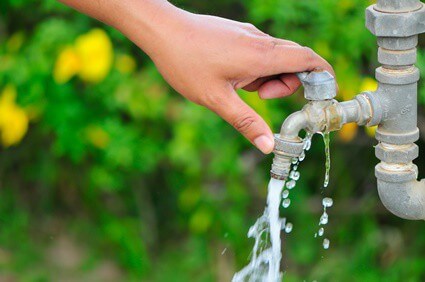
Is Filtered Tap Water Safe for Fish?
Like most “pure” varieties of water, filtered tap water removes chlorine. When water systems use carbon filtration, it also removes chloramines. However, it also takes away all the beneficial nutrients that tanks need to keep fish healthy.
While you can use filtered tap water, you’ll need to add minerals to it to make it fish-friendly. Without these minerals, your fish will become stressed and unwell. Eventually, they’ll die.
Is Spring Water Safe for Fish?
Spring water comes from natural water springs that are usually located underground. Before being bottled up, spring water goes through a filtration process to kill bacteria. Thankfully for fish, this process doesn’t kill minerals, making it suitable for aquariums.
While that’s the case, spring water isn’t created equal, and some brands don’t always have the minerals they need to stabilize the tank’s pH levels. However, it’s a good water option if you need to lower your tank’s pH or soften the water.
As a result, before you commit to using spring water, test the water for the minerals that are present to see whether it’s suitable for your fish community. Once you have a brand of spring water that contains all the elements you need, you can stick to it.
Is Bottled Water Safe for Fish?
Bottled water isn’t a standardized type of water. By this, we mean that it comes from various sources, including springs and wells.
Some bottled water brands will have undergone treatment to remove bacteria and minerals, while other bottled waters will have extra minerals added to them to improve the taste. Most bottled water has a lower pH.
Worryingly, some brands also contain small levels of chlorine, which is no better than tap water. As with spring water, you’ll need to test the water to make sure it’s suitable.
Also, bear in mind that bottled water can get expensive over time, making it a costly solution for your aquarium.
Is Distilled Water Safe for Fish?
Distilled water is created by boiling water and bottling it up. As a result, contaminants, chemicals, and minerals steam off. This process removes nitrites, bacteria, fungi, and heavy metals. Though, it also removes all essential minerals, such as calcium, magnesium, and sodium.
As a result, distilled water isn’t the best choice for tanks because it doesn’t contain the nutrients fish need. It can even speed up the rate that microorganisms grow, even though the water’s been treated.
Unfortunately, because it’s so pure, novice owners make the mistake of using distilled water, not realizing that it doesn’t provide the best conditions for fish.
However, you can remineralize the distilled water to make it safe for your fish. You just need to be aware of what minerals to add and be careful not to overdose.
Is Rainwater Safe for Fish?
Rainwater could be a good option for your aquarium if you’re on a tight budget. However, rainwater has low mineral content. It also has a wide pH range, so you must test it before deciding whether it’s suitable.
Not only that, but rainwater can become contaminated with pollutants, such as smoke and fumes, especially if you live in a built-up urban area.
As a result, the water can be filthy and harm your fish. Also, collecting enough rainwater isn’t possible in warm, dry climates where there’s little rainfall.
While leaving your tap water to sit for at least 24 hours is the easiest way to remove harmful chlorine, it won’t deal with the chloramines.
That’s why you must test the tap water to determine what chemicals you’re dealing with. However, if you leave your tap water to sit for long enough before a water change, you could be left with an easy, budget-friendly way to fill your entire aquarium.

